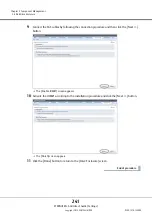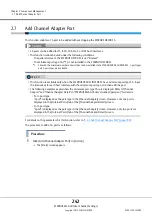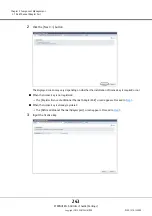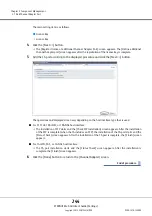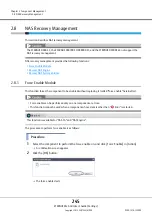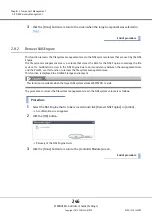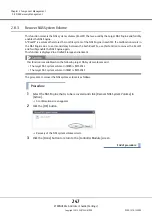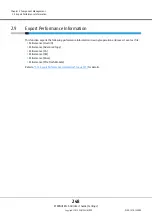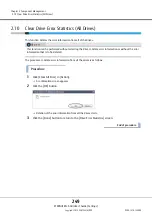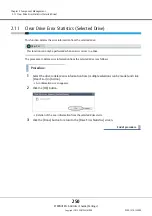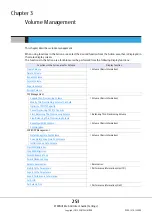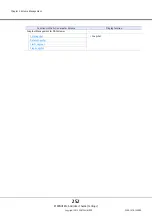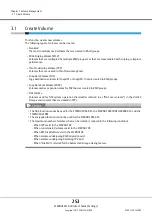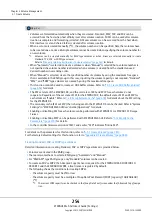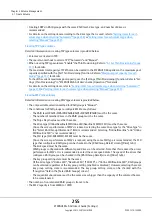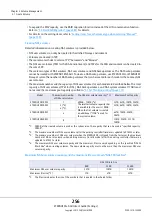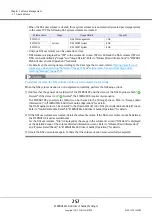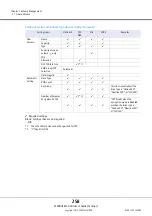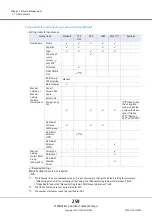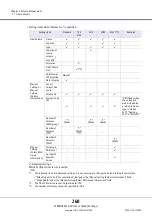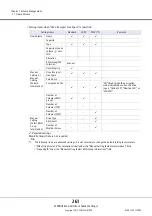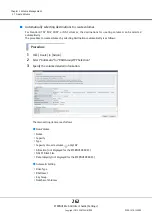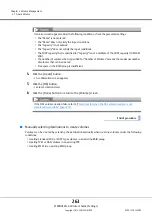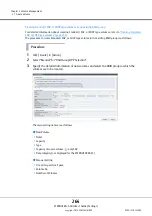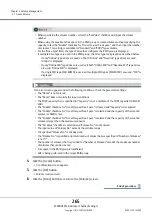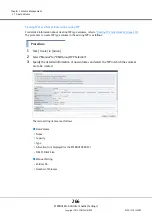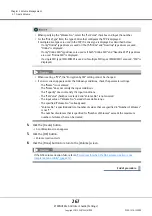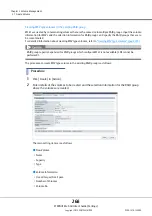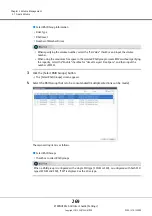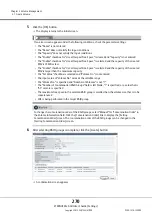
Chapter 3 Volume Management
3.1 Create Volume
ETERNUS Web GUI User’s Guide (Settings)
Copyright 2015 FUJITSU LIMITED
P2X0-1270-13ENZ0
255
•
Creating SDPVs in RAID groups with the same RAID level, drive type, and number of drives is
recommended.
•
For details on the setting items according to the drive type that is used, refer to
volume type when selecting "Automatic"" (page 258)
or
"Setting items for each volume type when
selecting "Manual"" (page 259)
Creating TPV type volumes
Detailed information on creating TPV type volumes is provided below.
•
Volumes are created in TPP.
•
There are two methods to select a TPP; "Automatic" and "Manual".
•
When creating TPV type volumes, "Enable" the Thin Provisioning. Refer to
"6.1 Set Thin Provisioning" (page
for details.
•
The maximum total capacity of TPV that can be created in the ETERNUS DX depends on the maximum pool
capacity specified with the [Set Thin Provisioning] function. Refer to
"Maximum pool capacity for each
for details.
To check the current maximum pool capacity, use the [Settings (Thin Provisioning)] function. Refer to "Set-
tings (Thin Provisioning)" in "ETERNUS Web GUI User’s Guide (Operation)" for details.
•
For details on the setting items, refer to
"Setting items for each volume type when selecting "Automatic""
"Setting items for each volume type when selecting "Manual"" (page 259)
Creating WSV type volumes
Detailed information on creating WSV type volumes is provided below.
•
The only available selection method for RAID groups is "Manual".
•
The conditions for RAID groups to configure WSVs are as follows:
-
The RAID level (RAID1+0/RAID5/RAID6/RAID5+0/RAID1/RAID0) must be the same
-
The number of member drives in the RAID group must be the same
-
The Stripe Depth value must be the same
-
The drive type (Online/Nearline/SSD/Online SED/Nearline SED/SSD SED) must be the same
(Since the access performance of WSVs is reduced, selecting the same drive type for the "Drive Type" in
the "Select RAID Group Information" field is recommended. Selecting "Online/Nearline" and "Online
SED/Nearline SED" is not recommended.)
-
The SSD type (SSD-M/SSD/SSD-M SED) must be the same
(Since the access performance of WSVs is reduced, using the same SSD type is recommended. The SSD
type that configures a RAID group can be checked in the [RAID Group Detail] screen ([Drive] tab).)
-
The disk speed must be the same
(RAID groups configured with different speed drives can be selected. Note that this reduces the access
performance for WSVs. It is recommended to select the same speed disks. The speed of the drives that
configure a RAID group can be checked in the [RAID Group Detail] screen ([Drive] tab).)
-
The key group setting state must be the same
(If the drive type is "Online SED", "Nearline SED", "SSD SED", or "Online SED/Nearline SED", RAID groups
can be selected regardless of the key group setting (enabled or disabled). However, selecting the same
key group setting state is recommended. The key group setting state can be checked with the
"Encryption" field in the [Select RAID Groups] screen.)
-
The sequential unused area must be the same size or bigger than the capacity of the volumes that are
to be concatenated
•
The number of concatenated RAID groups is from 2 to 64.
•
The WSV capacity is from 24MB to 128TB.
Summary of Contents for Eternus DX200F
Page 2: ...This page is intentionally left blank ...
Page 1082: ......

